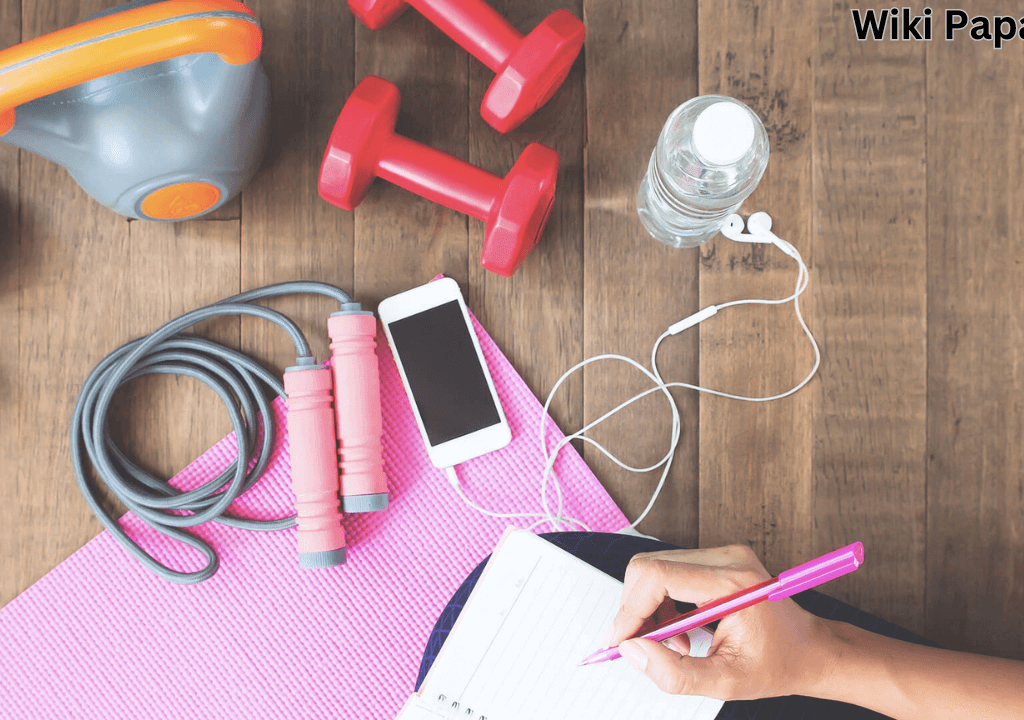Crafting a workout routine planner tailored to your goals and lifestyle is key to staying consistent and making progress on your fitness journey. Here are some valuable tips to help you design and follow your personalized daily workout routine:
How to Design a Workout Routine Planner
Set Clear Goals:
Before creating your workout routine planner, define your fitness objectives. Whether your goal is to build muscle, lose weight, improve cardiovascular health, or enhance flexibility, having a clear understanding of what you want to achieve will guide your workout planning process.
Assess Your Fitness Level:
Consider your current fitness level, and any limitations or injuries you may have. Assessing your strengths and weaknesses will help you choose appropriate exercises and progression strategies to gradually improve your fitness over time.
Read more about Fitness Routine for Weight Loss: A Comprehensive Guide
Choose a Variety of Exercises:
Incorporate a variety of exercises into your workout routine to target different muscle groups and prevent boredom. Include cardiovascular exercises for endurance, strength training exercises for muscle development, and flexibility exercises for mobility and range of motion.
Plan Your Workouts in Advance:
Outline your weekly workout schedule in advance, taking into account factors such as time availability, equipment accessibility, and recovery days. Having a structured plan through the best gym workout planner app can help you stay organized and committed to your fitness goals.
Focus on Consistency:
Consistency is key to seeing results from your workout routine. Aim to exercise regularly, ideally at least three to five times per week, and stick to your planned workouts as much as possible. Use the best free workout planner app for you and ensure you stick to the plan. Even on busy days, prioritize short, efficient workouts to maintain momentum.
Read more about Free Workout Plans for Weight Loss – Trimming Down
Gradually Progress Over Time:
Gradually increase the intensity, duration, or complexity of your workout routine schedule as your fitness level improves. Progressive overload is essential for continued adaptation and improvement, so challenge yourself with new exercises or higher resistance levels periodically.
Listen to Your Body:
Pay attention to your body’s signals and adjust your workout routine planner accordingly. If you’re feeling fatigued or experiencing discomfort, consider taking a rest day or modifying your workout to accommodate your needs.
Track Your Progress:
Keep track of your workouts, progress, and achievements using a workout journal, mobile app, or fitness tracker. Monitoring your performance over time can help you identify trends, celebrate milestones, and stay motivated on your fitness journey.
Stay Flexible and Adapt:
Be flexible with your workout routine planner and be prepared to adapt it based on changing circumstances or preferences. Life can be unpredictable, so having a backup plan or alternative workout options can help you stay on track even when faced with challenges.
Read more about Exploring Different Workout Routines – Variety in Fitness
Seek Professional Guidance if Needed:
If you’re unsure how to design an effective workout routine or need personalized guidance, consider consulting with a certified personal trainer or fitness professional. They can assess your needs, create a customized plan, and provide ongoing support and accountability to help you reach your fitness goals.
By following these tips for designing and following your workout routine, you can create a sustainable and effective fitness regimen that aligns with your goals and fits seamlessly into your lifestyle.
Importance of a Workout Schedule Planner
Creating a workout routine planner is essential for anyone committed to achieving their fitness goals effectively and efficiently. Here’s why having a structured plan is crucial for success:
Organization and Structure:
A workout routine planner provides structure to your fitness journey by organizing your workouts, rest days, and recovery periods. It helps you establish a clear schedule and ensures that you allocate time for exercise amidst your other commitments.
Goal Setting and Progress Tracking:
With a workout routine planner, you can set specific, measurable, and achievable fitness goals. By outlining your objectives and tracking your progress over time, you can stay motivated and focused on your journey towards success.
Optimized Time Management:
Planning your workouts in advance allows you to maximize your time at the gym or during home workouts. You can prioritize exercises that align with your goals and eliminate wasted time deciding what to do next, making your workouts more efficient and productive.
Balanced Workout Structure:
A well-designed workout routine planner ensures that you incorporate a balanced mix of cardiovascular exercise, strength training, flexibility work, and restorative activities. This balanced approach helps prevent overtraining, reduces the risk of injury, and promotes overall fitness and well-being.
Adherence and Consistency:
Consistency is key to achieving fitness results, and a workout routine planner helps you stay accountable to your goals. By scheduling great workout routines and adhering to your plan, you build healthy habits and increase the likelihood of long-term success.
Customization and Adaptability:
Your workout routine can be tailored to your individual preferences, fitness level, and lifestyle constraints. Whether you prefer high-intensity interval training, yoga sessions, or strength training workouts, you can customize your plan to suit your needs and preferences.
Motivation and Focus:
Having a written plan in place provides a visual reminder of your commitment to your fitness journey. It serves as a source of motivation, keeping you focused on your goals even when faced with challenges or obstacles along the way.
Flexibility and Adjustability:
While it’s essential to have a structured workout routine, it’s also important to remain flexible and adaptable. Your workout routine planner should allow for modifications based on changes in your schedule, energy levels, or fitness goals, ensuring that your plan remains sustainable and enjoyable.
Educational Tool:
Creating a workout routine planner can be an educational process, helping you learn more about different types of exercises, training techniques, and fitness principles. It empowers you to make informed decisions about your workouts and fosters a deeper understanding of your body’s needs.
Long-Term Success:
Ultimately, a well-crafted workout routine planner sets the foundation for long-term success in your fitness journey. By consistently following your plan, making adjustments as needed, and staying committed to your goals, you can achieve lasting results and enjoy a healthier, more active lifestyle.
In summary, a workout routine planner is a valuable tool that provides structure, organization, and accountability to your fitness journey. By creating and adhering to a personalized plan, you can optimize your workouts, track your progress, and ultimately achieve your health and fitness goals.

